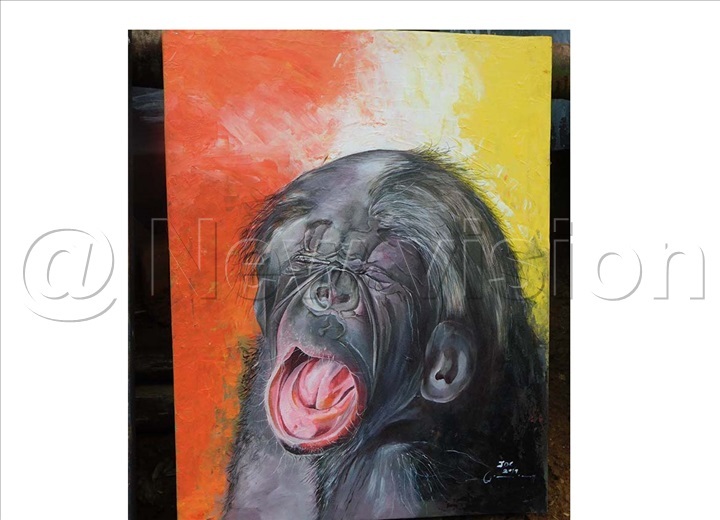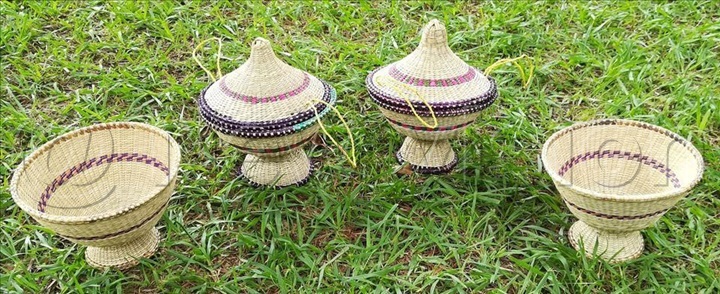Good news for art and memento dealers
This follows workshops, research and trials carried out in 2019. The findings of a baseline survey revealed that souvenirs and handcrafts have the potential to transform the livelihoods of artisans.
ART & CRAFT
Uganda has a number of shops that are stocked with a variety of artefacts. Take for example Buganda Road's African Village, Kayabwe's Equator point and Bunyampako in Queen Elizabeth National Park that are stocked with small or huge drums, T-shirts, vibrantly coloured visual art pieces, Kyondos (sisal bags,) frocks, footwear, and jewellery.
"The challenge is upon Uganda artisans/dealers to create more products that are identified with Destination Uganda," says celebrated batik artist Nuwa Wamala Nyanzi.
"At my stall in the African Village, I have pieces like Pretty Shy depicting a typical Ugandan woman who acts shy when approached by a suitor. There is one of a, Marabou Stork, ably handling the garbage challenge in our Kampala City," he adds.
A seasoned art collector, Pietro Averono, hardly has any space left in his house given the numerous sculptures, ancient furniture, tools and carvings. He hails the spirit of art that survived political or economic turmoil.
"Art remains alive. I know where there are good works of art waiting to grace walls in: homes, offices and commercial centres. The themes vary from culture, dance, food and nature. Pay an affordable fee for good pieces," says Averono.

However, upon close scrutiny, some buyers feel cheated upon discovering some of the items are imported from: Kenya, DR of Congo and Sudan.
This concern has been addressed by the Ministry of Tourism Wildlife And Antiquities through a Handicraft and Souvenir Development Project (HSDP), which is funded by Enhanced Integrated Framework (EIF.)
A sum of $10, 543m (approximately sh 39m) is already injected in artisan groups with the aim of improving the quality of their products.
"HSDP is already facilitating creativity, enabling linkages between artisans, dealers and the entire tourism industry. With improved competitiveness comes a better livelihood. We are enhancing this by equipping them with skills, better equipment and marketing techniques," says Grace Mbabazi Aulo, the HSDP project head.
This follows workshops, research and trials carried out in 2019. The findings of a baseline survey revealed that souvenirs and handcrafts have the potential to transform the livelihoods of artisans.
"Previously, handcraft production has been predominantly done by women and children to supplement household incomes," noted Aulo.
"HSDP aims at turning the venture into some form of serious business. We have entities that comprise: pottery, jewellery, beading, textiles, barkcloth, fashion, bags and music instruments," says Aulo.
Aulo expects the existing obstacles faced by artisans like competition with cheaper imported products, lack of design standards, poor product packaging, absence of links with buyers, and lack of an identity to be addressed.

"We have registered the cry about not having any monetary institution willing to finance their ventures besides lacking raw materials. Good enough we are responding to all the existing constraints in a multipronged way," says Aulo.
Mpambire Drum Makers in Mpigi, Boomu Women's Group in Masindi and Integrated Women's Group in Jinja are going to be equipped with better tools and centres that will be constructed as strategic locations for tourism traffic. The production centres are going to be constructed in Masindi, Jinja and Mubende.
Aulo adds that dealers will also market their products online.
The Uganda Wildlife Authority (UWA) spokesperson, Simplicious Gessa, says changing towns into tourist destinations does not happen overnight. He says there is a lot of planning and strategizing that goes into transforming a community with public art.
"A successful public art program takes time to develop and requires a group of dedicated team members. Like UWA did on Wildlife Road, one is challenged to have a concise and well-documented vision," says Gessa.
An art walk is a great way to direct people through a destination and encourage guests to visit different areas of town. Art stopovers are becoming increasingly popular around Uganda and they benefit communities greatly as they support local businesses.
Gessa says having a permanent art collection is desired by visitors, and communities in Bwindi and Kidepo are reaping from artefacts.
"Art creates curiosity, encourages visitors and residents to explore new pieces of art. Art encourages regular visits from people outside the community as they will want to see what has changed in the collection," says Gessa.
The other art tour in Kampala is Semagulu Museum in Mutundwe, which has a homestead converted into storage of art pieces. The tour weaves guests through art pieces for two hours.
Communities within the environs of tourist attractions like Kidepo Valley National Park, Queen Elizabeth National Park and Murchison Falls National Park are already reaping from tourists who buy their mats, stools, waist beads and necklaces.